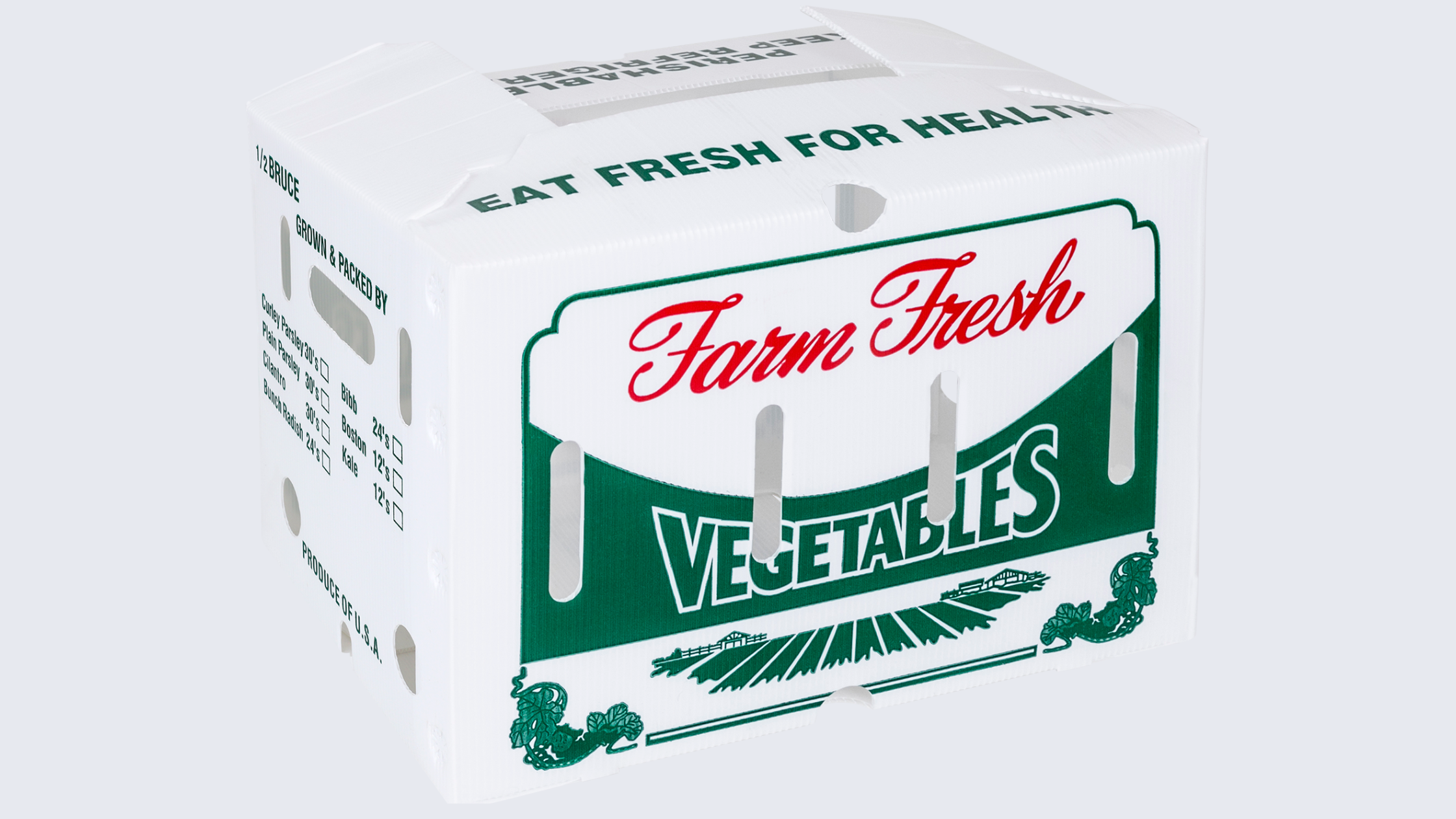Storage and Handling Practices for Plastic Corrugated Boxes
The produce growing and packing industry relies on high-quality boxes to transport your produce to market. You need boxes that are sturdy, insulated, waterproof, reusable, and ideally also sustainable. Plastic corrugated boxes, like FriendlyBox, are the ideal solution, achieving each of these requirements with flying colors.
Effective storage and handling of plastic corrugated boxes is critical to maintaining durability and maximizing their functionality. Whether you're a produce grower, packer, or seller, adopting best practices ensures that these shipping containers serve you well throughout their lifecycle.
In this guide, we delve into the key strategies for optimizing the storage and handling of plastic corrugated boxes.
1. Climate-Controlled Storage:
The Foundation of Longevity
Plastic corrugated boxes excel at cold storage for produce because they cannot become damp like cardboard or even wax cardboard boxes. However, they also benefit from climate-controlled storage when not in use. Protect boxes from extreme heat or cold and control humidity which could affect their otherwise durable structural integrity.
2. Stacking Techniques:
Building a Solid Foundation
Each corrugated plastic box has an ideal method for stacking. When empty, they can often be stacked within each other up to reasonable heights to maintain structural form and provide efficient storage.
When filled with produce, use practical stacking methods such as placing the heaviest boxes on the bottom and ensuring a strong foundation for each stacked corner. Prioritize uniform weight distribution and avoid excessive stacking heights.
3. Avoiding Direct Sunlight:
Shielding Against UV Exposure
One element that can damage your corrugated plastic boxes is direct sunlight and UV exposure. Although Industry Plastic wraps palates with UV protected film for long-term under sun storage, we recommend trying to store boxes indoors or in shaded area.
4. Regular Inspections:
Detecting Wear and Tear Early
Plastic corrugated boxes can be used many times, but should still be inspected regularly. Look for signs of wear, damage, or issues that might compromise the effectiveness of your boxes. Keep the boxes clean and store them dry. If you notice structural damage, you can recycle the damaged box.
5. Safe Handling Techniques:
From Warehouse to Transportation
Always use safe lifting and handling procedures when loading, unloading, and transporting plastic corrugated boxes. This will reduce the risk of damage to the boxes and, of course, minimize the risk of lifting injuries for your people. Use proper lifting equipment such as a fork lift for palettes or a dolly for stacks of plastic corrugated boxes full of produce.
6. Labeling and Documentation:
Organizing for Efficiency
Clear labeling is extremely useful when packaging your produce in otherwise identical plastic boxes. Build a system of labels and label replacement to facilitate easy identification of each box's contents. This will ensure safe and accurate handling in a busy warehouse environment. Our FriendlyBox can digitally print 8 different colors for you!
7. Proper Nesting and Folding:
Saving Space and Resources
When your plastic corrugated boxes are not in use, you can nest or fold them to minimize the footprint they require in your warehouse. Folding boxes can be stacked upright for easy retrieval and reloading after they are washed or you can nest boxes that are not folded. A nested stack will then take up the footprint of only one box per stack.
8. Training Staff:
Building a Culture of Care
Once you introduce plastic corrugated boxes to your produce handling routine, proper handling becomes essential. Train your team in the best methods for packing, stacking, sanitizing, and safely reusing your supply of boxes. Emphasize the importance of attentive and safe handling of the boxes to ensure that your produce is always shipped in a clean and safe storage environment. This will help you foster a culture of care and responsibility within your organization.
9. Recycling and Repurposing:
Sustainable End-of-Life Practices
Of course, even great reusable packaging doesn't last forever. Once you notice signs of structural damage after many cycles of packing and stacking, the best thing about plastic corrugated boxes is that they are recyclable. Boost your business sustainability by remembering to recycle your boxes when they are no longer useful.
Enjoy the Full Potential of Plastic Corrugated Boxes for Produce Packaging
By implementing these best practices, you can get the best performance from your corrugated plastic boxes in produce packaging and extend their lifespan for many repeated uses. From proper stacking to regular inspections, each step plays a crucial role in ensuring that these versatile containers continue to meet your storage and handling needs effectively. Contact us today to learn more about plastic corrugated boxes for your produce business.
